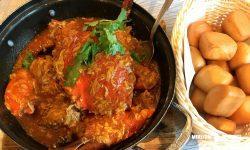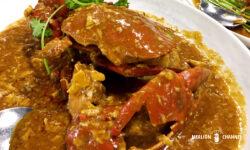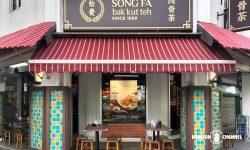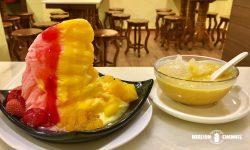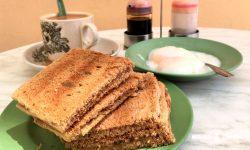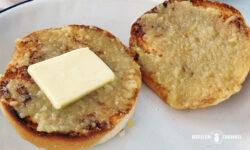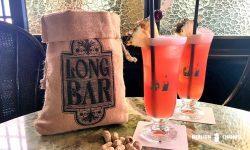What to Eat in Singapore: Your Guide to 19 Must-Try Local Dishes
Savoring local delicacies is one of the highlights of any trip.
In Singapore, a melting pot of diverse ethnicities and heritage, a rich culinary scene is thriving, blending influences from multiple cultures.

This guide introduces Singapore’s must-try local specialities, from iconic dishes to affordable and delicious street food, and even some exceptional fine dining.
- Top 5 Must-Try Singaporean Dishes
- Welcome to the Mee-Centric World!
- Feast on Singapore Street Food
- Rich Flavours of Nyonya Cuisine
- Sweet Endings with Local Desserts
Top 5 Must-Try Singaporean Dishes
To start, here are five iconic dishes that immediately come to mind when thinking of Singaporean food. These are the absolute must-tries for anyone visiting Singapore.
① Chicken Rice: Singapore’s Beloved Favourite
Hainanese Chicken Rice, a dish featuring tender, juicy chicken served with aromatic rice cooked in chicken broth, is certainly one of Singapore’s most beloved national dishes.
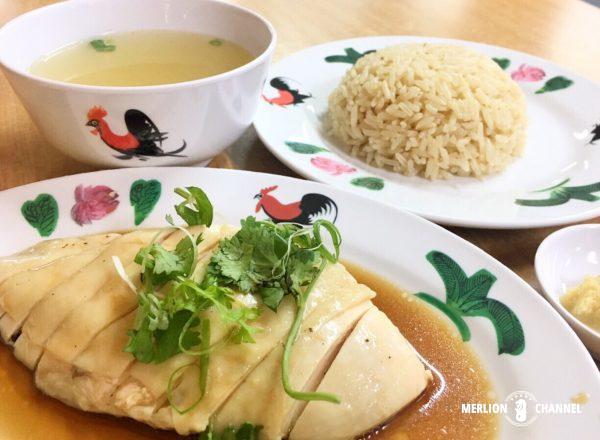
Most restaurants offer steamed or roasted chicken and allow diners to choose their cut (thigh or breast).
② Chilli Crab: Singapore’s Signature Seafood
Among Singapore’s many iconic dishes, Chilli Crab is often hailed as a luxurious treat. This dish features crab stir-fried whole in its shell with a spicy, tangy chilli sauce, resulting in a bold and flavour-packed meal.

While the succulent crab meat is undoubtedly the star, dipping bite-sized “mantou” (fried buns) into the rich chilli sauce is equally an exquisite pleasure.
Here are two recommended restaurants:
- Jumbo Seafood in Clarke Quay: A legendary spot for Chilli Crab.
- Palm Beach in Marina Bay: Famous for its stunning views of the bay.
Experience an unforgettable dinner in Singapore with Chilli Crab.
③ Bak Kut Teh: Hearty Energy Boost
Bak Kut Teh is a hearty dish of pork spare ribs simmered in a garlicky and peppery broth, known for its energy-boosting meal.
It comes with unlimited refills of the soup, allowing diners to savour it in various ways. Pour it over rice to enjoy a brothy dish, or dip fried dough sticks (youtiao) into the broth and savour every drop.

For first-timers, a visit to the famous Song Fa Bak Kut Teh is a must.
④ Laksa: Fusion of Flavours
Laksa is a noodle dish that originated in Peranakan cuisine, a unique fusion of Malay and Chinese culinary traditions.
It features a rich and aromatic broth made from coconut milk, prawn stock, and a blend of fragrant spices. The dish is packed with ingredients such as rice noodles, prawns, shellfish, and fish cakes.
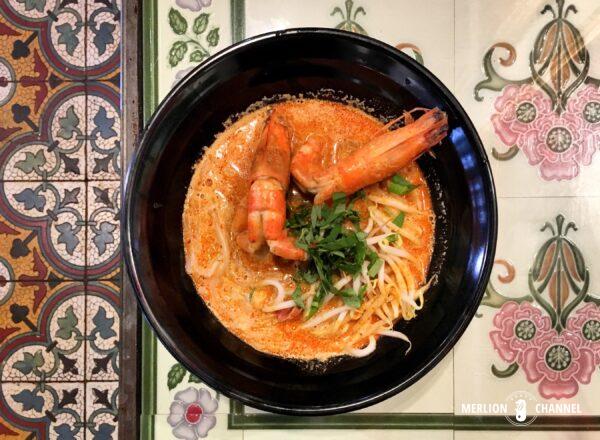
The noodles are traditionally cut short, making it customary for locals to eat the laksa with a spoon rather than chopsticks.
For an authentic taste of Singapore Laksa, visit 328 Katong Laksa or Janggut Laksa in Katong.
⑤ Kaya Toast: Breakfast Classic
Kaya Toast, a traditional Singaporean breakfast, features toast filled with kaya jam and butter. Kaya jam is a green spread made from eggs, coconut, and sugar, flavoured with the fragrance and colour of pandan leaves, a plant native to Southeast Asia.
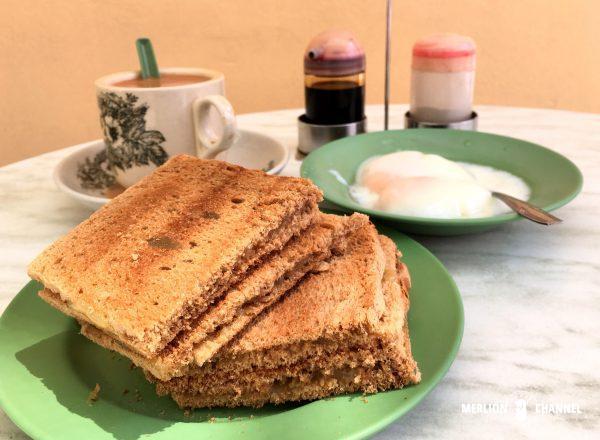
The classic way to enjoy kaya toast is dipping it into soft-boiled eggs with a dash of soy sauce, for a delightful harmony of sweet and savoury flavours. Whether you enjoy it at an old-school kopitiam (a traditional coffee shop) with the locals or try a modern take at a stylish cafe, kaya toast is the quintessential breakfast dish you can’t miss in Singapore.
Welcome to Singapore’s Mee-Centric World
Hokkien Mee, Wanton Mee, Bak Chor Mee, Prawn Mee—Everywhere you look, it’s Mee. “Mee” is the Hokkien word for “noodles.”
Welcome to Singapore’s Mee-centric world—it’s time to taste your way through each of them!
⑥ Hokkien Mee: Favourite for All Ages
Hokkien Mee is a delicious noodle dish made with two types of noodles – rice noodles and egg noodles – stir-fried with prawns and other seafood.
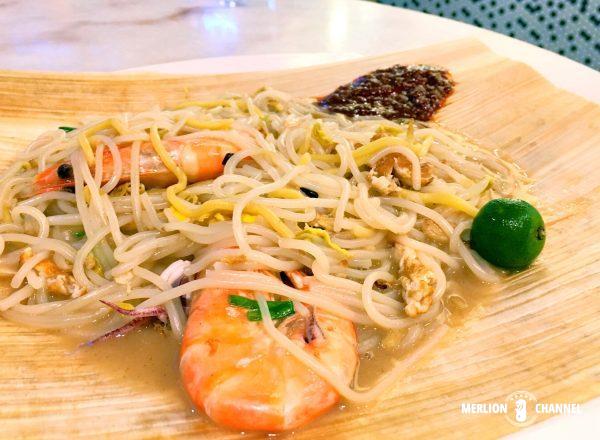
This non-spicy dish, infused with rich seafood broth, is a popular choice for diners of all ages.
For more on Singapore’s best Hokkien Mee, check out the guide below.
⑦ Wanton Mee: Simple Yet Delicious
Wanton Mee is a staple Singaporean dish, commonly found at food courts and hawker centres across the island.
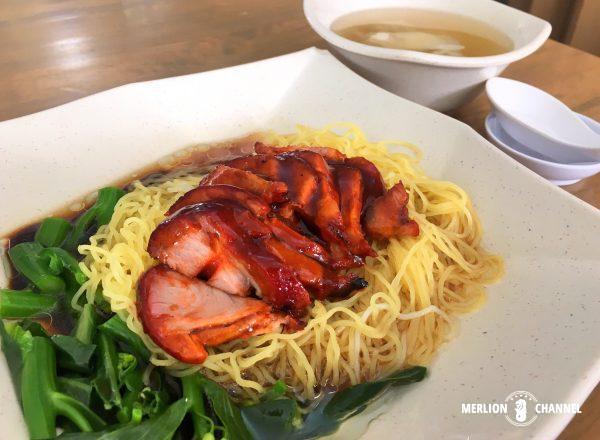
This dry noodle dish features springy, thin egg noodles with a perfectly smooth texture. It’s typically served with slices of char siu (barbecued pork) and vegetables, all coated in a sweet and savoury sauce that brings all the flavours together.
⑧ Bak Chor Mee: Minced Pork Noodles
Bak Chor Mee, with “Bak” meaning pork, “Chor” referring to minced meat, and “Mee” meaning noodles, is widely known as “minced pork noodles.”
You can choose between flat noodles (Mee Pok) or thin noodles (Mee Kia). It is generously topped with minced pork, liver, meatballs, and other savoury ingredients.
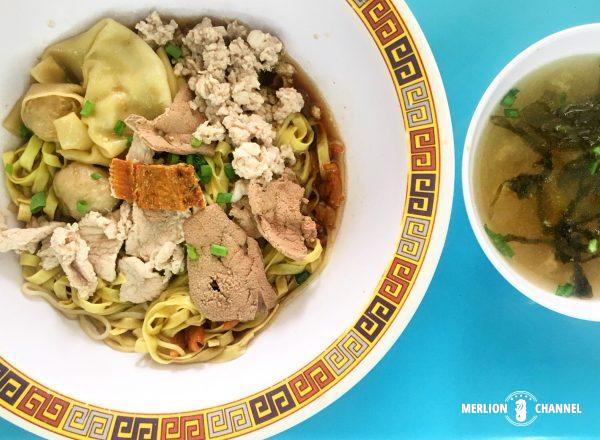
For an exceptional experience, be sure to try the Michelin-starred Hill Street Tai Hwa Pork Noodle, known for serving the best Bak Chor Mee in Singapore.
⑨ Prawn Mee: Flavourful Prawn Delight
Prawn Mee is a delightful noodle dish featuring succulent prawns. While many noodle dishes in Singapore offer a choice between dry (without soup) and soup versions, this dish truly shines when served in its robust soup.
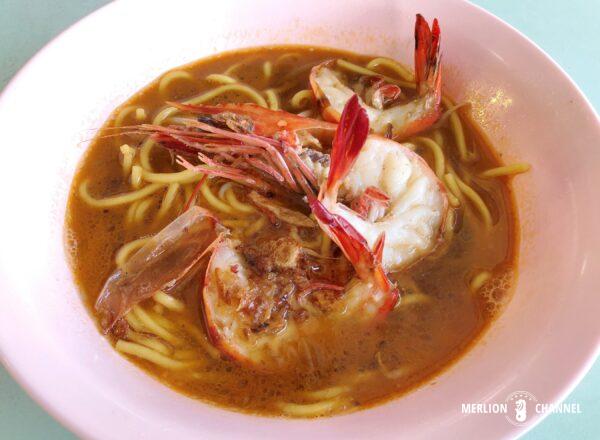
This simple bowl of egg noodles, topped with several halved prawns, boasts a surprisingly rich and flavourful broth.
⑩ Lor Mee: Savoury Gravy Noodles
Lor Mee, often overlooked for its modest appearance, is a hidden gem in Singapore’s noodle scene.
The dark, glossy layer covering the bowl is a thick, spice-infused gravy with a savoury depth. Customise the flavour to your liking by adding black vinegar, chilli, or garlic, then mix it all together. The rich sauce clings perfectly to the chewy, flat egg noodles, making each bite deeply satisfying.
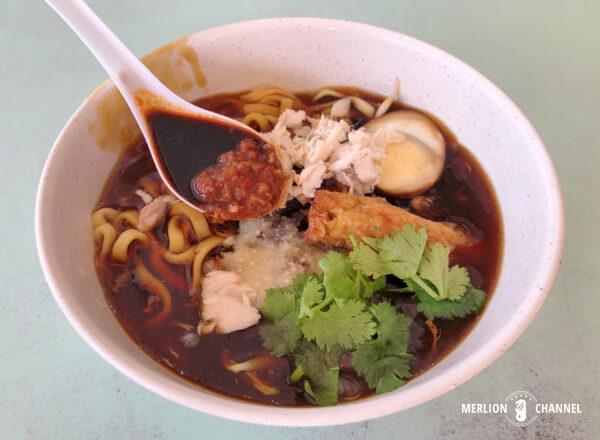
For an authentic taste of Lor Mee, head to Xin Mei Xiang Lor Mee at Old Airport Road Food Centre or Lor Mee 178 at Tiong Bahru Market Food Centre, both famous for drawing long queues of eager diners.
Don’t let appearances deceive you: these popular stalls are definitely worth a try!
Feast on Singapore Street Food
The irresistible aroma wafts through the air, a clear sign of delicious street food nearby. Indulging in affordable, delectable hawker food until you’re full—What more could you ask for?
⑪ Satay: Sizzling Grilled Skewers
Satay is one of the most popular street foods in Singapore—skewers of marinated beef, chicken, or lamb, grilled over charcoal and served with a rich and flavourful peanut sauce.
Satay Street is a top destination for satay lovers, right next to Lau Pa Sat, a hawker centre in the heart of the financial district. Every evening, as the sun sets, satay stalls take over Boon Tat Street, filling the air with the tantalising aroma of grilled skewers. The street transforms into a vibrant alfresco dining spot, bustling with people enjoying sizzling satay and ice-cold beer.
⑫ Carrot Cake: Savoury Radish Delight
Despite its name, “Carrot Cake (Chai Tow Kway),” contains no carrots and isn’t a cake at all. It’s a savoury pan-fried dish made from radish cake, prepared by mixing grated radish with rice flour.
In Singapore, radish is often referred to as “white carrot,” which is why the dish is called “carrot cake.”
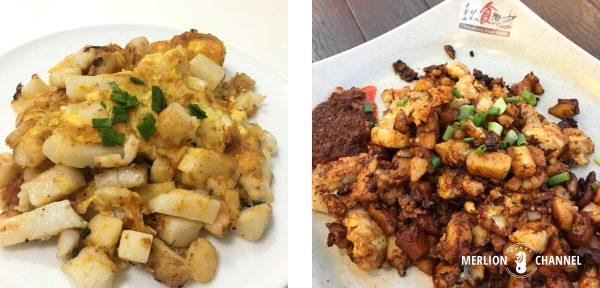
There are two varieties: the white version, spiced with a hint of chilli, and the black version, flavoured with a sweet dark soy sauce. Why not try both and discover your favourite?
⑬ Char Kway Teow: Street Food Classic
Char Kway Teow, a stir-fried noodle dish with flat rice noodles, bean sprouts, eggs, and sausage, is a classic street food popular not only in Singapore but also throughout Southeast Asia, including Malaysia and Thailand.
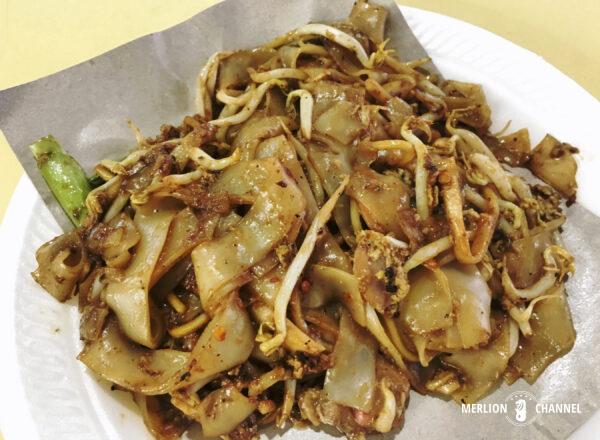
This dish strikes a perfect balance between the sweetness of dark soy sauce and the spiciness of the chilli. The crisp bean sprouts add a delightful texture, making it a truly satisfying and flavour-packed dish.
⑭ Claypot Rice: Hearty Dish from the Pot
Claypot rice is a classic Chinese dish where rice is cooked with chicken, sausage, and vegetables. Enjoying rice straight from the piping hot clay pot, fresh off the stove, is an exceptionally satisfying experience. The crispy, fragrant crust that formed at the bottom of the pot is an extra layer of delight.
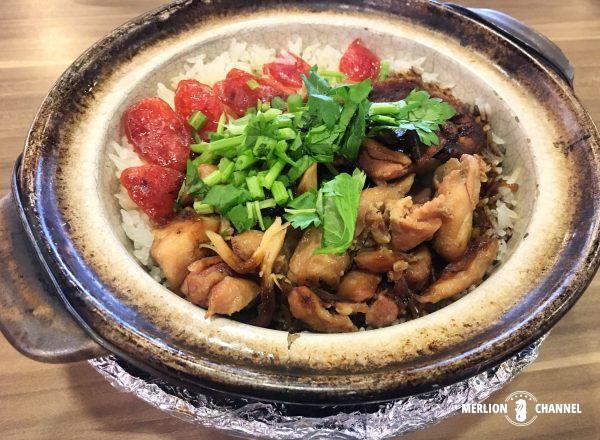
Please note that claypot rice takes some time to be served as it is cooked to order. It’s best to allow plenty of time for your visit or check if the restaurant accepts advance orders.
Rich Flavours of Nyonya Cuisine
Nyonya cuisine is a unique culinary tradition developed by the Peranakans, descendants of Chinese immigrants who settled in the Malay Peninsula from the 15th century onwards and intermarried with local women.
You can savour the distinctive flavours of Nyonya cuisine in Singapore, particularly in the Katong district, where Peranakan culture thrives.
⑮ Kueh Pie Tee: Charming Hat-Shaped Delight
A classic appetiser in Peranakan cuisine, Kueh Pie Tee features a thin, pastry shell that resembles a silk top hat, earning it the nickname “Top Hat.”

The crispy pie tee cup is filled with ingredients such as shredded radish, egg, and prawns.
The mild flavour and bite-sized portions make it a favourite for all ages.
⑯ Popiah: Veggie-Packed Roll
Popiah is a delightful roll, wrapped in a thin crepe-like skin with ingredients such as bean sprouts, lettuce, and egg.
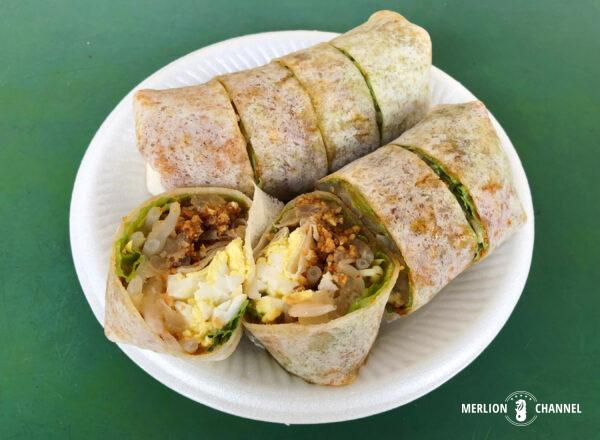
The crisp freshness of the vegetables, the sweetness of the eggs and peanuts, and the spicy kick of chilli come together in perfect harmony.
Healthy and flavourful, it’s the perfect side dish to complement the often vegetable-light hawker fare.
⑰ Nyonya Kueh: Traditional Peranakan Sweets
For a delightful teatime treat, enjoy Nyonya Kueh, traditional Peranakan sweets. They are made from glutinous rice, rice flour, and tapioca flour, combined with natural Southeast Asian ingredients like coconut milk and pandan leaves. Nyonya Kueh is known for its comforting sweetness and unique textures.
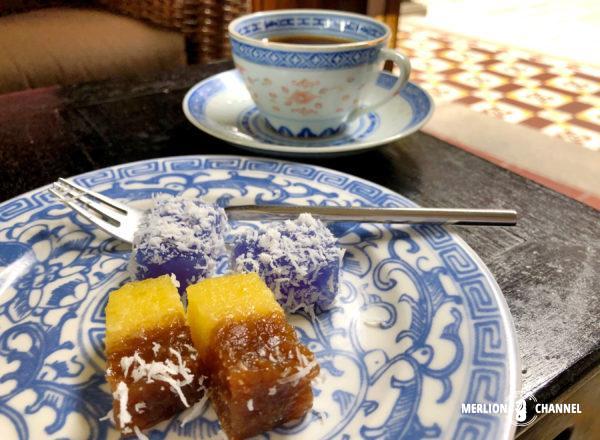
With a wide array of varieties, first-timers are recommended to start with popular choices:
- Ondeh Ondeh, chewy glutinous rice balls filled with rich gula melaka;
- Lapis Sagu, delicate multi-layered cakes;
- Ang Ku Kueh, tortoise shell-shaped sweets, which are believed to bring good fortune.
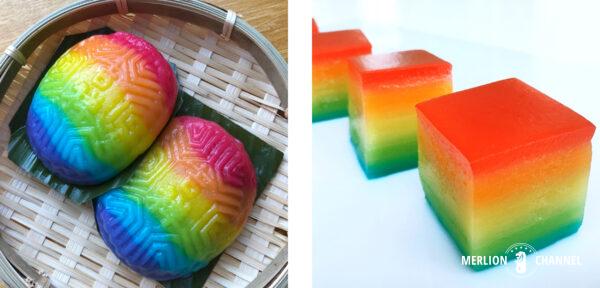
Sweet Endings with Local Desserts
Even with a full stomach, there’s always room for dessert. Why not end your meal with some delicious local sweets?
⑱ Snow Ice: Melt-in-Your-Mouth Delight
Snow Ice is a special type of shaved ice with a snow-like texture that melts effortlessly in your mouth.
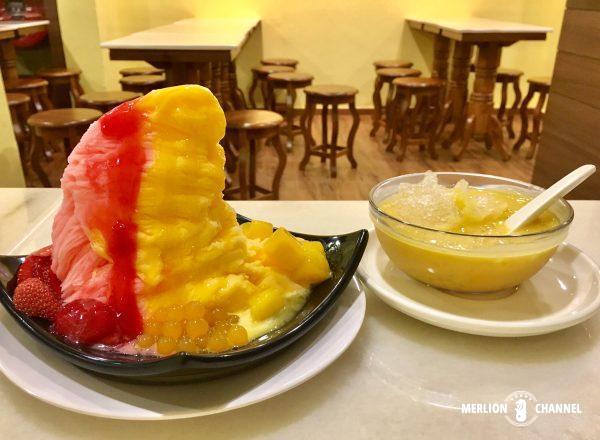
With a wide variety of flavours, it offers everything from popular fruit options such as mango and lychee, to traditional tastes like matcha and black sesame, as well as distinctive Singaporean flavours, including durian and Chendol.
One of the best places to enjoy this dessert is Mei Heong Yuen, located in Chinatown.
⑲ Chendol: Refreshing Shaved Ice
Chendol, a beloved shaved ice dessert, is enjoyed not only in Singapore but throughout Southeast Asia.
You might be surprised by the green, worm-like pieces topping the shaved ice alongside red beans. But don’t worry, it’s actually a jelly coloured with pandan leaves, the same ingredient used in kaya jam. It’s entirely safe to eat and taste great!
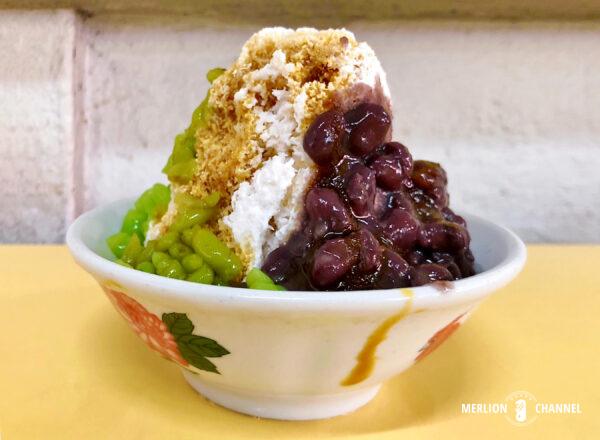
The dessert is finished with a drizzle of coconut milk and gula melaka, a brown sugar syrup made from coconut sap, which enhances the subtle sweetness of these natural ingredients. A cooling treat, it offers a refreshing escape from Singapore’s sweltering weather.
AD

